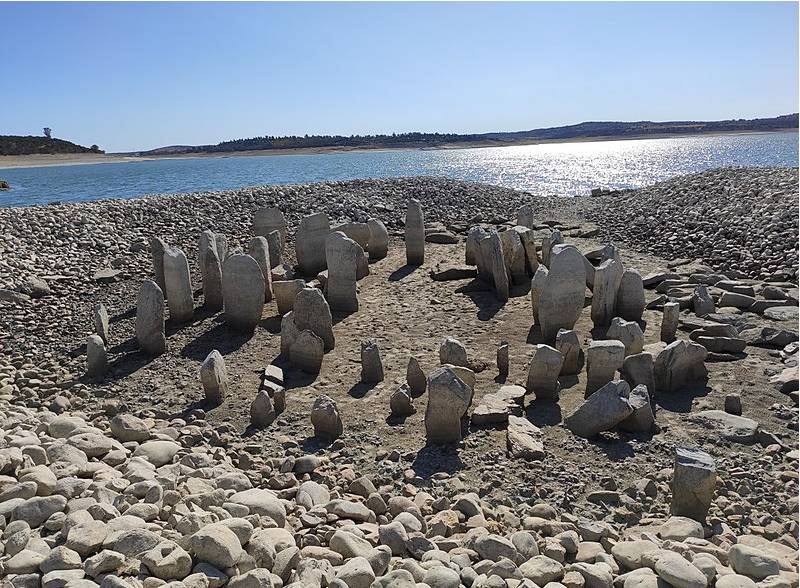Date Published: 22/08/2022
ARCHIVED - Spanish Stonehenge emerges from reservoir amid historic drought
This is only the fourth time the monolithic monuments have been visible in Spain

Spain is sizzling in the worst drought the country has seen in more than 60 years and one of the results is that the nation’s valuable reservoirs are swiftly drying up, sparking water shortage fears for the autumn and winter. An unexpected side-effect, however, has uncovered a historic marvel: Spain’s very own ‘Stonehenge’, the Dolmen of Guadalperal.
Usually hidden below the waterline in a reservoir in Extremadura, the megalithic stone circle is believed to date back as far as 5000 BC. The dolmen was first discovered by German archaeologist Hugo Obermaier in 1926 but the entire structure was flooded in 1963 as part of a rural development project during dictator Franco’s reign.
Since then, the structure has sat under water in the Valdecanas reservoir, but the recent spell of dry weather and heatwaves has reduced the water supply to just 28% of its capacity, revealing the standing stones for only the fourth time in history.
"It's a surprise, it's a rare opportunity to be able to access it," archaeologist Enrique Cedillo from Madrid's Complutense University said.
When the dolmen last became visible during the drought of 2019, the Asociación Raíces de Peraleda launched a petition to have it removed from the reservoir and it has redoubled its efforts this time around, garnering around 45,000 signatures.
"It is a megalithic dolmen of great value that is now, for the first time, and who knows if it will be the last, fully accessible," the petition reads, adding that the drought has presented the perfect opportunity to remove the structure while “it is still well preserved.”
A little further south, a land survey for a prospective avocado farm in Huelva, Andalucia, has revealed one of the largest megalithic complexes in Europe. More than 500 standing stones, dolmens, mounds, coffin-like stone boxes called cists were uncovered on a 1,500 acre stretch of land in La Torre-La Janera, ranging from three to 10 feet in height.
“This is the biggest and most diverse collection of standing stones grouped together in the Iberian peninsula,” explained José Antonio Linares from Huelva University, adding that the structures were most likely erected during the second half of the sixth or fifth millennium BCE.
Image: Wikimedia Commons
Loading
Sign up for the Spanish News Today Editors Roundup Weekly Bulletin and get an email with all the week’s news straight to your inbox
Special offer: Subscribe now for 25% off (36.95 euros for 48 Bulletins)
OR
you can sign up to our FREE weekly roundup!
Read some of our recent bulletins:
Discount Special Offer subscription:
36.95€ for 48 Editor’s Weekly News Roundup bulletins!
Please CLICK THE BUTTON to subscribe.
(List price 3 months 12 Bulletins)
Read more stories from around Spain:
Contact Spanish News Today: Editorial 966 260 896 /
Office 968 018 268





























